Life Cycle Analysis
LCA and LCC assessment to optimize the sustainability and cost-effectiveness of roof designs
About the project:
This project focused on a comparative study of conventional and sustainability-focused designs for both flat and steep roofs. Utilizing Life Cycle Analysis (LCA) and Life Cycle Costing (LCC) methodologies, the designs were thoroughly evaluated for their environmental impacts and cost-effectiveness over projected lifespans of 50, 80, and 100 years. The study provided an in-depth understanding of the long-term implications of roof design choices, underlining the importance of sustainability in modern construction practices.
The Life Cycle Analysis (LCA) was meticulously carried out using the Global Warming Potential (GWP), the Primary Energy Non-renewable Total (PENRT), and the Acidification Potentials (AP) as principal indicators. These were in line with the life phases as defined by EN 15804. The initial step of the process required establishing characteristic values for the three eco-indicators in relation to the superstructures being studied. For this data collection, the database of the German Federal Ministry for Housing, Urban Development, and Construction (Ökobaudat) served as the primary resource. In situations where the Ökobaudat database provided little to no data for specific building material layers, European Product Declarations (EPDs) from product manufacturers were directly referenced instead. Once the necessary input values were determined, these were combined with previously identified data regarding GWP, PENRT, and AP to calculate the overall balance of the constructions. This comprehensive approach to LCA enabled a precise and accurate assessment of the environmental impacts of the different roofing designs.
Life Cycle Costing (LCC) calculations were an integral component of the project. The initial costs for producing and optimizing the roof structures were sourced from quotes provided by executing companies. LCC calculations were projected over timelines of 50, 80, and 100 years. In year zero, the manufacturing costs were applied. Following this, expenditures for repairs, estimated at 0.2% per annum, as well as maintenance and inspection costs, estimated at 1.2% per annum, were considered throughout the roof's lifetime. For irregular payments, the lifespan of the superstructure was taken into account. As layers reach the end of their service life, they are renewed, incurring additional costs. The discount rate was determined considering a general price increase of 2% per annum and an interest rate of 5.5% per annum. This LCC approach allowed for a comprehensive understanding of the long-term cost implications of the different roof designs.
Flat roof
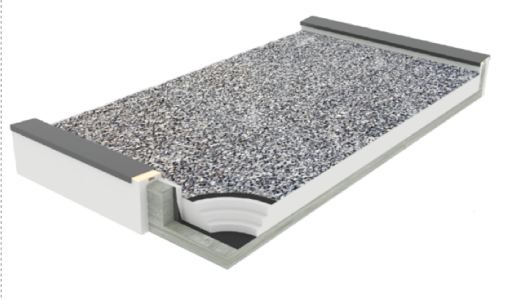
The conventional flat roof design consisted of a multi-layered construction beginning with a reinforced concrete ceiling, followed by sloped concrete, a bituminous vapor barrier, EPS insulation, and an EPDM waterproofing membrane. A filter fleece and a layer of gravel completed the construction, providing protection and aiding in drainage.
The sustainability-focused flat roof design integrated eco-friendly materials and methods, replacing the gravel layer with a green roof, substituting EPS insulation with wood fiber insulation, and utilizing exposed concrete to minimize material count, thereby reducing the environmental impact of the construction.
Steep roof
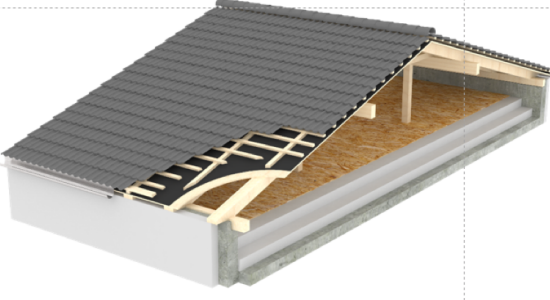
The steep roof design in this project was characterized as a cold roof, with the top floor ceiling serving as the thermal boundary. Notably, the standard steep roof already demonstrated impressive ecological performance. The primary modifications to this roof design concerned the insulation of the top floor slab. In this sustainable approach, EPS (Expanded Polystyrene) insulation was replaced by cellulose blow-in insulation within a wooden structure, further enhancing the roof's environmental profile while maintaining its thermal efficiency.
Results & Goals
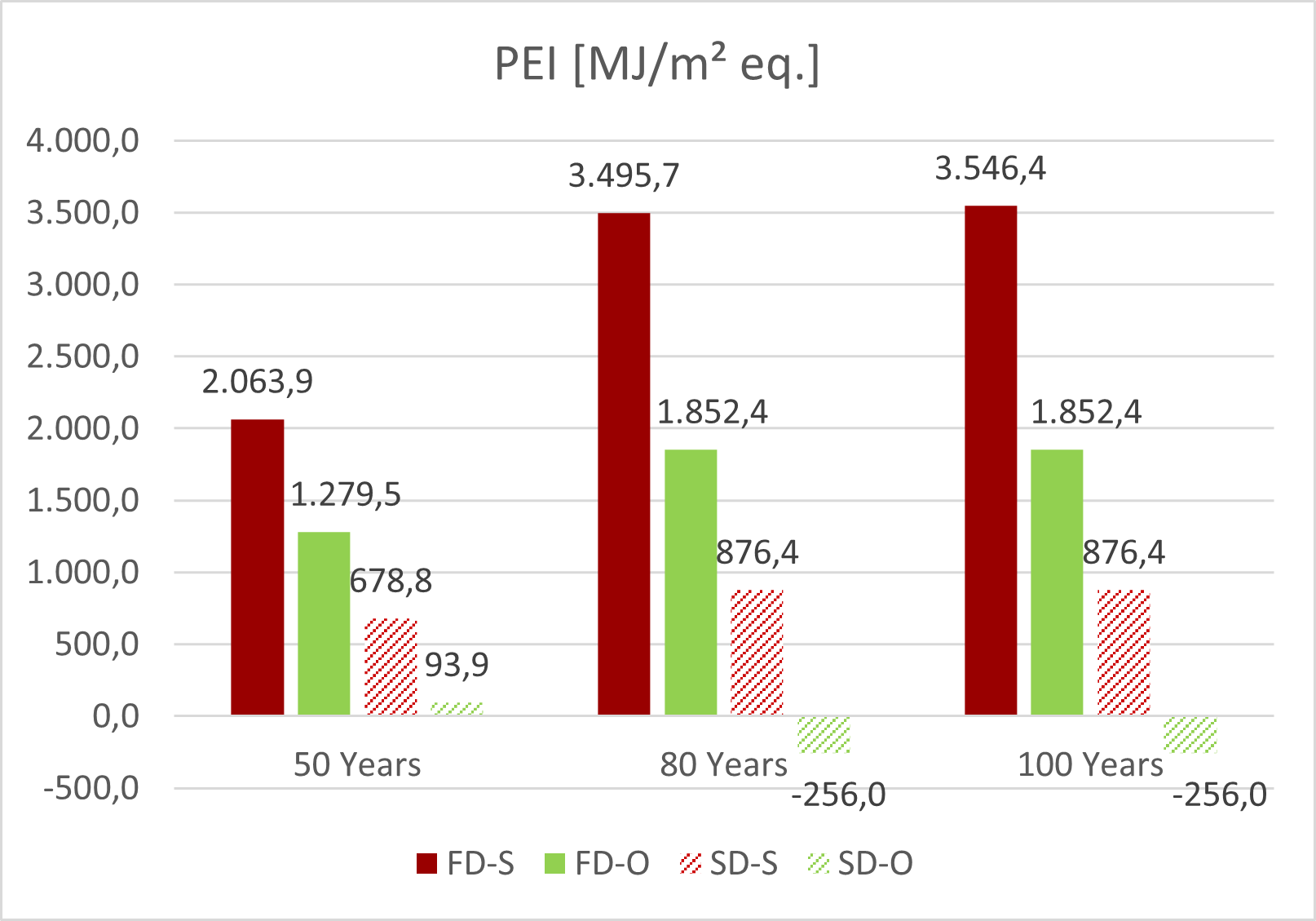
PENRT
In the figures for the PENRT, it can be seen that the flat roof performs worse than the pitched roof. In general, the optimized variants are better than the standard variants. The difference between flat roof standard and optimized increases when comparing the service life of 50 and 80 years. This is due to different replacement cycles
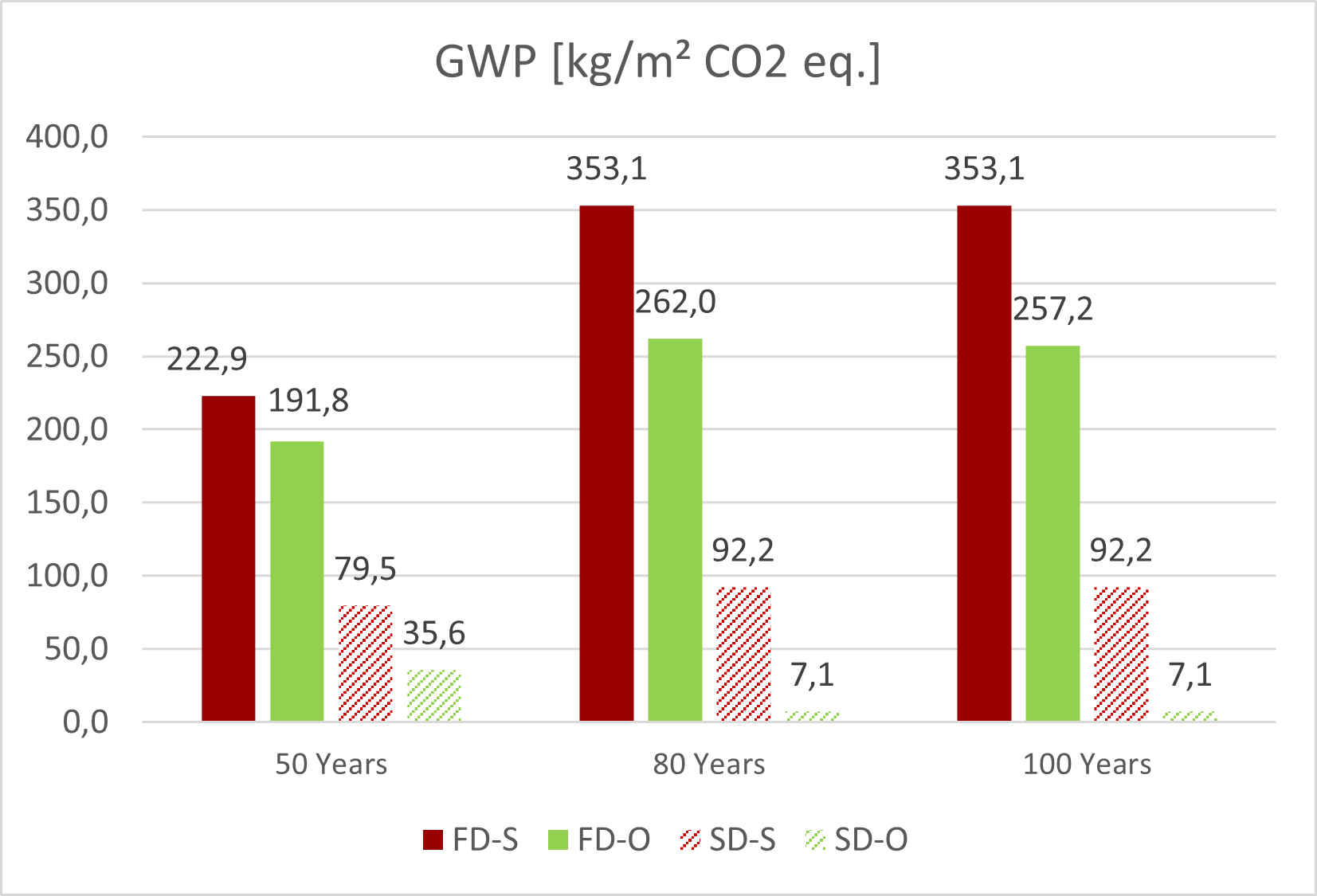
GWP
For the GWP, the balance is similar to that of the PENRT. The pitched roof performs much better than the flat roof, both in the standard variant and in the optimized variant. With the optimization of the flat roof the GWP improves due to the consideration of the green roof. Without this, the green roof would not perform significantly better. This time, the reason is based on the additionally required filter and waterproofing layers and also on the installed drainage layer.

AP
The acidification potential does not reflect the previous courses. For the green roof, there is a slight deterioration due to the optimization. For the pitched roof, on the other hand, the potential remains almost the same.
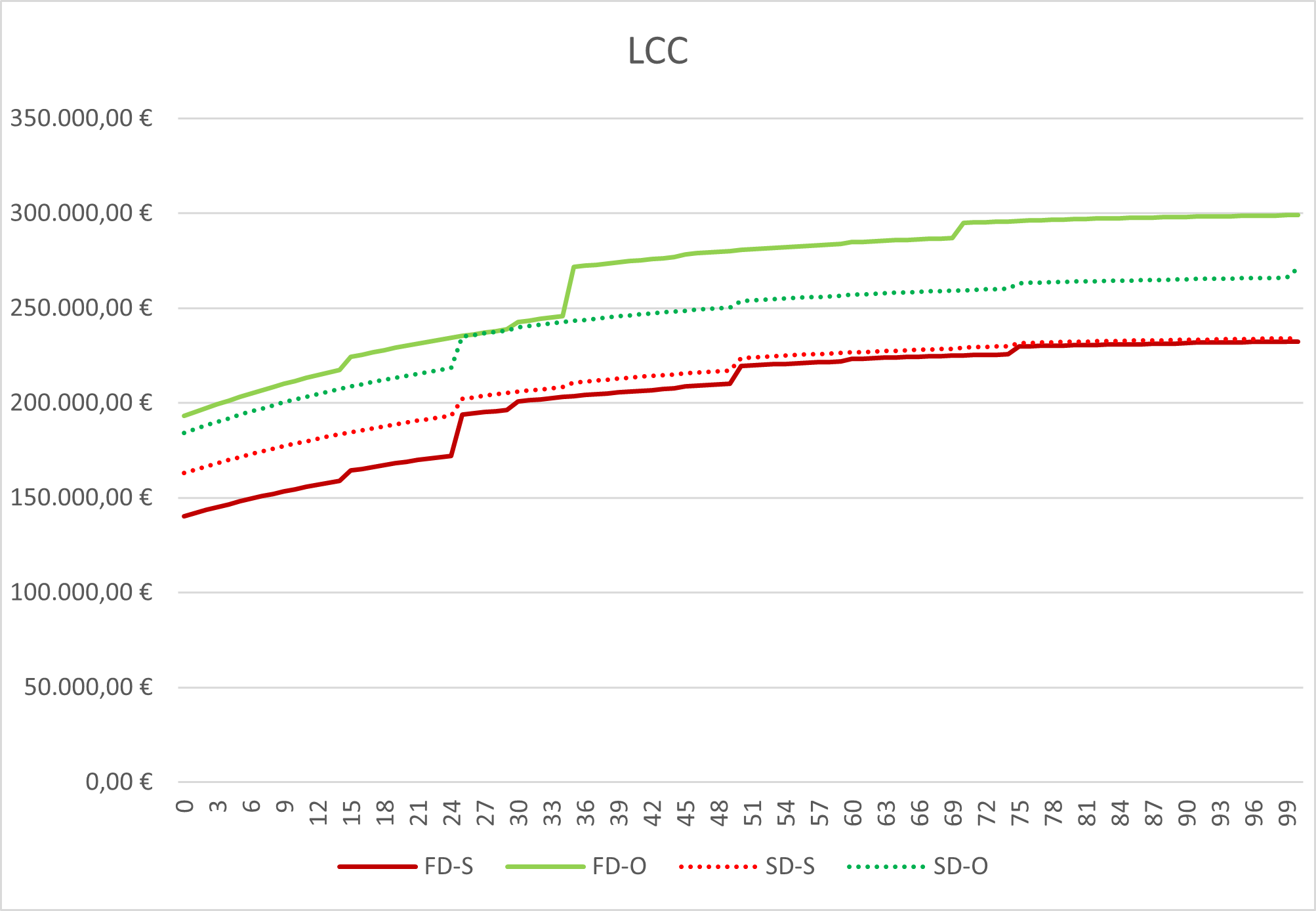
LCC
The figure shows the cost development of the different superstructures over 100 years. The conventional flat roof is the least expensive structure to build. However, the cost of repairing the flat roof is higher, which is why the costs approach those of the pitched roof after just 25 years. The optimized flat roof is the most expensive variant in this comparison. Due to the elaborate design of the green roof, the costs are very high both in production and maintenance. The production costs of the standard variant for the pitched roof are slightly higher than the flat roof. Since the superstructure is more durable than the flat roof, the maintenance costs are lower.
Conclusion
For all periods under consideration, the Pitched Roof Standard stands out as the recommendation in this assessment. With the optimized pitched roof, there is an increased cost, which is usually the most decisive factor in planning and execution. If the ecological factors have more weight than the costs, the optimized pitched roof would be recommended. With a life span of 50 years, arguments such as the cheap production costs could be found for the execution as flat roof standard (if the aesthetic perception is not considered too strongly). It is notable that the optimized flat roof does not perform strongly positively in any period under consideration. One reason for this is that studies on the microclimate of the nearby environment (cooling in summer and insulating effect in winter) are not considered in this balancing. The positive effects of the green roof therefore unfortunately do not have an impact on this balance.
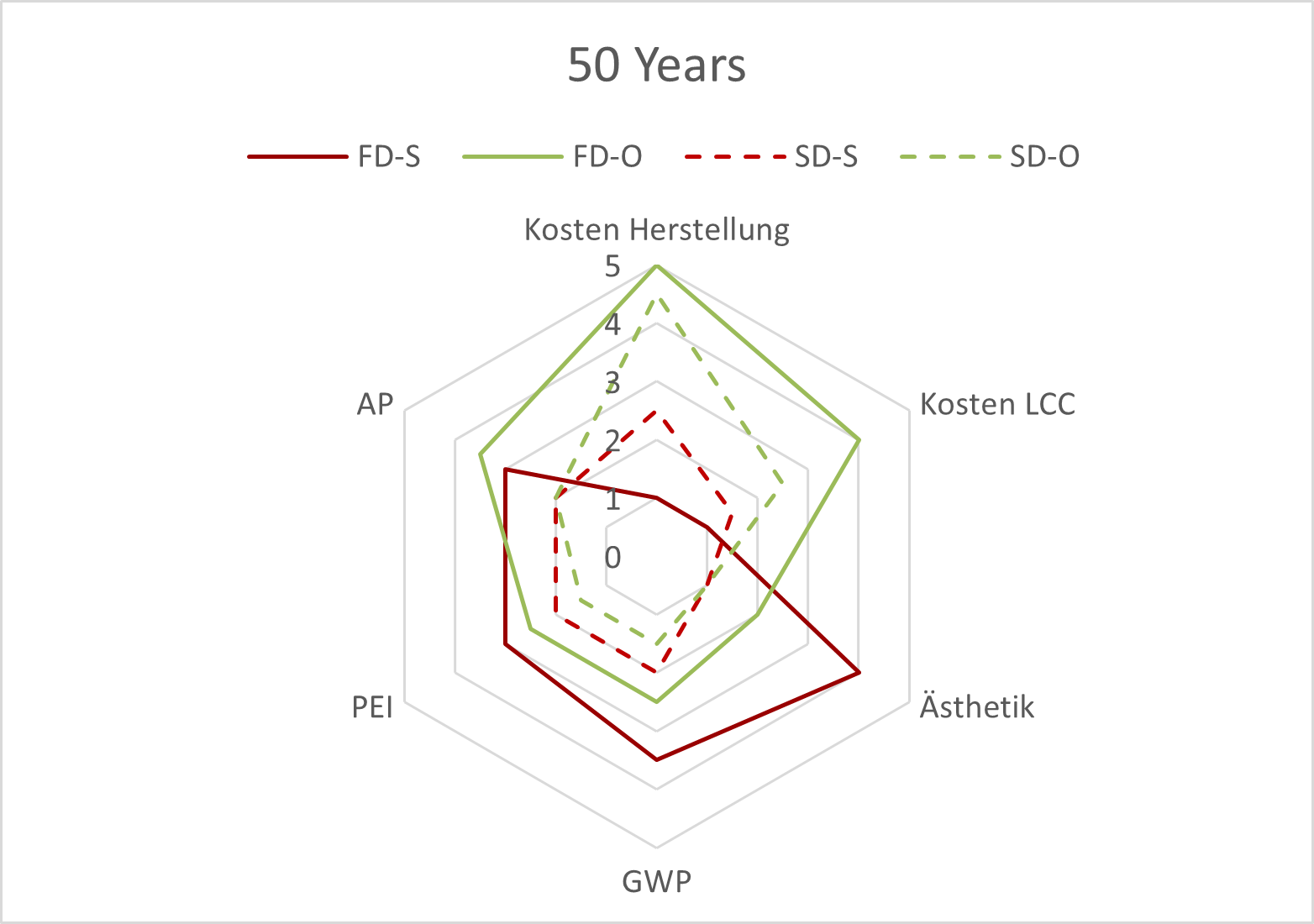
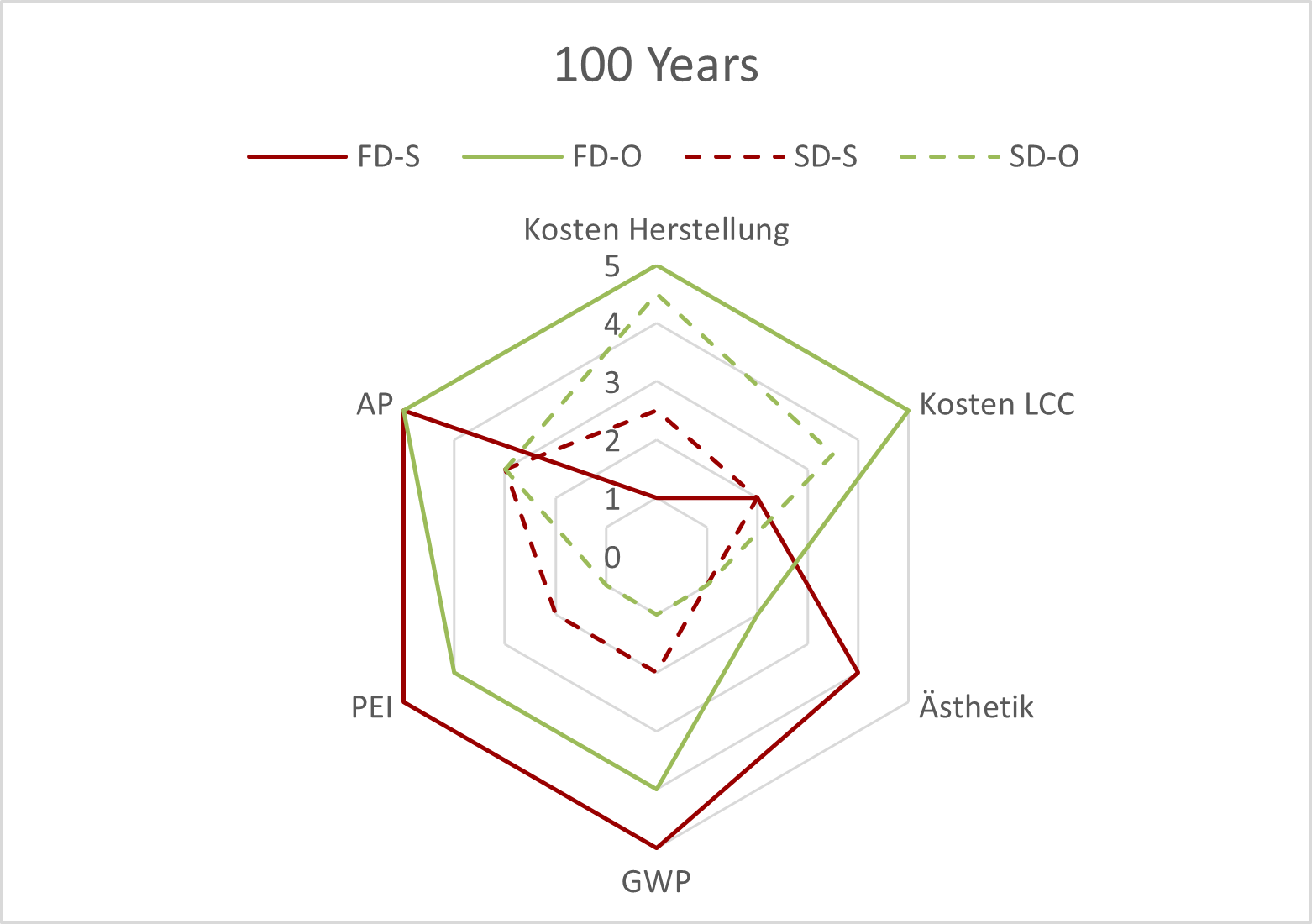
*In the slides, each item considered gets a rating from 1-5, with 1 being the best score.
You want to hear more?